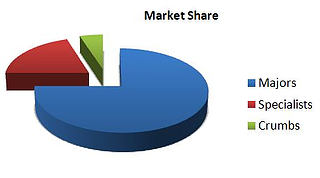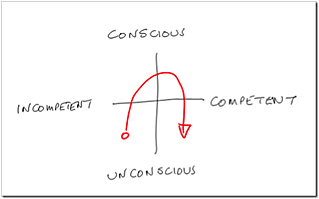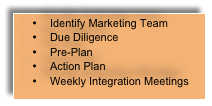Growth Insights for CEOs

AI Search is Here – And it’s Reshaping the Buyer Journey
Part 1 of our four-part series exploring how AI search is transforming visibility, SEO, and digital strategy - and what CEOs need to do now to stay competitive.
| Executive Takeaways |
| Declining web traffic isn’t random - it’s a symptom of changing search behavior. AI search is already impacting over 25% of user journeys - and growing fast If you’re not being cited, you’re missing opportunities-period. |
Recent Posts

Rising Above Organic Growth
Sat, May 5, 2012 — A successful small to medium size business often runs the risk of feeling “too comfortable." Even though revenue is coming in, your customers like you, and your sales force is calling on customers regularly, you aren’t seeing the growth you are looking for. This lack of desired growth may be a result of new competitors, new products or services in the market, or that the market itself is growing stagnant. Get Outside Your Comfort Zone If any or all of these things are happening it should cause you to take a hard look at your business and consider going out of your comfort zone to continue to grow. It may be time to consider looking for new markets for your product. If you've grown comfortable selling to one or a few vertical markets, going beyond them may cause fundamental changes in your company. You may have to learn new industries, call on different kinds of buyers, and maybe have to recruit new sales people with knowledge of this new category. Market Expansion Most of all, you will have to take a hard look at your business and decide what kinds of problems you can be solving for new and different companies. Really getting into the guts of your business and looking beyond the obvious answers can sometimes be a painful exercise. You may be required to change the culture of your company in order to accommodate this new market opportunity that you have uncovered. But, the growth that comes with it is definitely worth the effort.
Too Broad a Brush: The Lack-of-Focus Problem
Wed, Apr 11, 2012 — Perhaps the most common issue I see among all kinds of businesses, from startups to large, established firms, is a lack of focus in their marketing. This generally takes the form of what I call taking too broad a brush to the market — throwing broad, scattershot strategies at the market in the hopes that some of it will stick, instead of pinpointing the most lucrative opportunities and then choosing the right applications — the right brush, if you will — to get the most of out those opportunities.

Growth Opportunity: The Demand Chain
Mon, Mar 19, 2012 — Efficiency Only Goes So Far The last ten years of American business have been focused on integrating and perfecting operational efficiencies through the perfection and active management of the Supply Chain. For the last couple of years of economic turmoil, many companies have almost exclusively focused on supply chain efficiencies as a strategy for survival. Now the challenge is taking the expertise and company culture focused on linear thinking and introspection of the supply chain and start growing again.
Stay up-to-date with the latest from Chief Outsiders

Maximizing Your Position In Your Market
Mon, Sep 26, 2011 — Every company must develop a strategic direction that best fits its capabilities and its standing in its marketplace. Most business categories fall into similar market share patterns. There are three major players who, combined, have roughly 70-90% of the market. Then you have a group of small savvy specialists that have identified an underserved audience within the market. These tend to be businesses that succeed based on lower volumes, by definition, but much higher margins. In general, they tend to have no more than 5% of the market each. And, finally, you have the remaining companies in the category that live on the crumbs that are left over.

Situational Competence: A Requirement for International Management
Sat, Aug 6, 2011 — Small and mid-size businesses are becoming increasingly international. This means that CEOs who want to grow need to gain expertise in understanding employees and clients from different cultural backgrounds.

Building Company Value After an Acquisition
Sun, Mar 27, 2011 — Marketing’s Role in Post-Merger Integration The deal was just signed! Now what do we do? How many times have we heard this familiar cry? You are not alone. Over 70% of the deals completed today fail to add company value! The primary reason for most failures: poor post-merger integration planning and execution. The integration of two businesses after an acquisition is no longer restricted to the domain of Finance and IT. Markets drive our businesses today! The role of Marketing in building company value after an acquisition is more critical than ever before. To build market share, competitive dominance and product superiority, Marketing’s approach to the integration program must be very systematic. Marketing must uphold the brand, maintain customer confidence and leverage all possible synergies while vigilantly monitoring ROI. As if this isn’t a difficult enough balancing act, Marketing must articulate the longer-term “go-to-market” strategy to ensure the continuity of value enhancement programs long after the integration process is complete. So where do you begin?
.png?width=1500&height=398&name=CO_Corporate%20Logo%202021_4C_HOR_FNL-1%20(1).png)